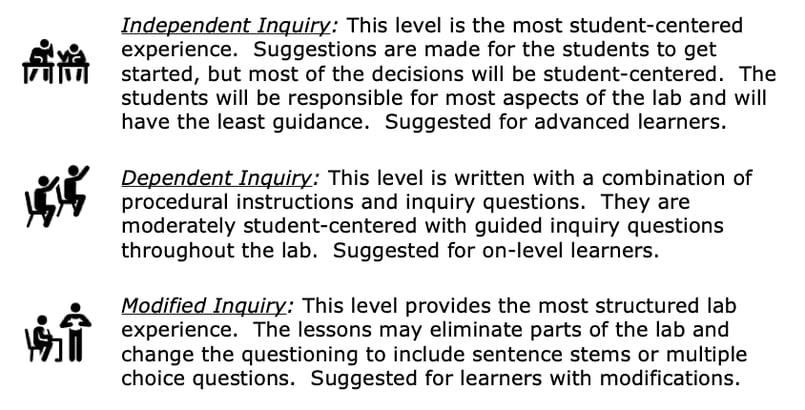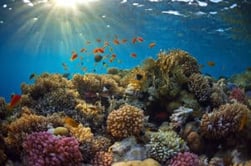Designs for Biodiversity Inquiry Lab
Middle School Inquiry Lab on Designs for Biodiversity
In this lab, students will play a game to reinforce the concept that biodiversity creates a more robust ecosystem than monoculture.
Each inquiry lab will contain an essential question that will drive the lesson and make students think. For this lesson, the essential question is:
- How can we decide which designs are best for biodiversity and ecosystem services?
BACKGROUND INFORMATION AND MATERIALS LIST:
Students will begin the lab by reading the essential question and background information. This can be done individually, as lab groups, or as a whole class. If you consider lab groups, you also might include some type of whole class formative checks before digging into the lab.


Materials List:
- Biodiversity Cards page (1 set per team)
- Diverse/Monoculture Pieces page (1 set per team member)
- plastic zip-close bag for pieces/cards
- colored pencils
- glue (for assembling pieces)
- internet for research (independent only)
PROCEDURE:
For this inquiry lab, students will be playing a game that reinforces the importance of having biodiversity. Also, students are given a fictional map of land donated to the federal government and will evaluate possible designs for its use.
For the game, students will place game tokens in front of them. With a flip of a card, students will either add or remove game tokens based on what the biodiversity card states. But be careful, there are a few “disaster” cards that can wipe away an entire ecosystem. Last player with tokens left wins the game!
After the game is complete, students will work together to design an area of land “donated” to the federal government. Students work to define what it means to be successful and share with the rest of the class. Once students have heard everyone else’s definitions, groups can decide on a final version for themselves. Finally, students will analyze a map of the land and come up with a plan that will satisfy the people who live in the area, including the donor. Students will divide the area into parks, monuments, and preserves.
CHECK FOR UNDERSTANDING:
At this point in the lab, students will be checked for understanding by answering questions about their findings. Here are a few that come with the lab:
- Why was it a disadvantage to have a large monoculture in this game?
- What would each of the following groups think of the design you chose?
- Environmental groups:
- Hunters:
- Loggers:
- Businesses:
- Tourists:
CONCLUSION
Students will go back to the essential question and write a CER (Claim, Evidence, Reasoning) to conclude the lab. Once completed, students will reflect back on their learning by answering the following questions:
- What was difficult about designing a plan for your land use?
- How would your plan change if encouraging biodiversity was your only goal?
MODIFIED AND INDEPENDENT INQUIRY VERSIONS
All of the Kesler Science inquiry labs come with three different modification levels. Each lab is differentiated using the icons below.
STANDARDS ALIGNMENT
NGSS: MS-LS2-5 – Evaluate competing design solutions for maintaining biodiversity and ecosystem services.

Download Over $100 in FREE Resources
For Middle School Science
Simply create a login below and gain immediate access to a selection of our Kesler Science product line worth $100 - for FREE. There's a full version of every product type! You'll also join tens of thousands of middle school science teachers who receive timely tips and strategies straight to their inbox.





